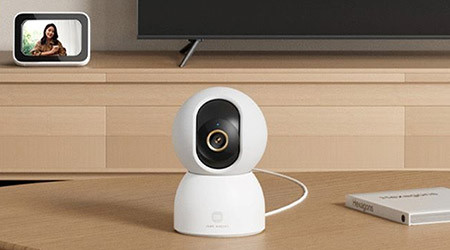Questioning Xiaomi Strategies
- 25.11.2016
- 1877
- Joney Tour
- Add new comment

Global technology is currently immersed into a state of uncertainty with China startup-funding waning. Couldn’t it be a better chance to take a second look at the front-runners?
Xiaomi has come the furthest of them all. This smartphone manufacturer, with a passionate Lei Jun at its helm, fought its way with top-notch cell phones at low prices. Back in the day, the company was given $1.1 billion to be later valued at $46 billion, rating it the most valuable startup in the world. Its success was predicted to be long-lived until Huawei released luxury phones and smaller companies started to push into brick-and-mortar sales, leaving Xiaomi to ride to fourth place. But that is not what the company settled for.

First impression
Rolling out smart appliances placed the first brick in the foundation of the company’s manufacturing conglomerate. It is unclear if such an investment could be fully covered.
Xiaomi is abandoning its online-first credo and gets its phones into brick-and-mortar shops, launching phones, packed with some impressive specs, bringing in world-famed designers and setting prices lower than major rivals, making its cellphones a competitive weapon.

The company is well-placed to be considered a manufacturing conglomerate and it would be appropriate to start thinking of it as a one. It may not overtake Apple, but it plays rough with Phillips, Siemens or Samsung Electronics.
This conclusion is shaped out of the fact that Xiaomi invested in 55 companies, producing everything from vacuum cleaners to bracelets. Much advertised in the past, this business concept becomes more popular these days. A net profit from all Xiaomi associated companies would be $3 billion in sales, according to sources close to the company. Xiaomi keeps all the figures in confidential.

Lacking this information, it is better to address revenue multiples instead of earnings, when comparing Xiaomi with other manufacturers. The company also shares profits with hardware manufacturers. Xiaomi says that these devices contribute to expanding customer base, that if provided with internet services would increase recurring revenue stream.

Xiaomi is a mix of both Apple and Phillips, seeing an upswing in appliance sales in China and given optimism on phone sales growth in India. Analysts say that Xiaomi has the guts to reach 60 million phone sales this year with an average device price of $175, pushing it to $10.5 billion markers. Combined with the revenue, subsidiaries bring, we see $13.5 billion. Xiaomi is gradually approaching Apple and almost catching up with Phillips.

The company remains optimistic, though still languishes under a level predicted two years ago. Xiaomi refers to phone production business as its “bread and butter”, pointing out that the sales of services to increasing customer base will raise the income threshold. Last year the company started to monetize that base through advertising, games and other transactions.
Xiaomi is not willing to sell its share anytime soon and if its selling scheme flies, the prices may stay up for some time. Mr. Lei does not seem to have plans of IPO launch as well, staying positive about bank loans. It is not clear whether the company plans to raise more funding beyond the 2014 round.

Rivalry between Xiaomi and Samsung
Chinese were brought up to believe that domestic brands are of lower quality, encouraged to invest more in foreign brands, like Apple and Gucci. Xiaomi is one of the domestic firms that volunteered to remedy this situation. A good example would be its air purifiers’ breakthrough. Seven months into the launch they held 20% of the market share and continue to be sold out like hotcakes, confirming product’s leading position. In the time when China faces pollution crisis, this sector should not be underestimated.

Xiaomi also invested in an array of small hardware manufacturers, introducing Ninebot Mini electro-scooters, water purifiers, electrical sockets, light bulbs, scales, power strips and tonometers. There is also an internet-enabled device for growing flowers.
One of the advantages Xiaomi has is developing a forward-looking coordinated smart home strategy, competitors find challenging to do. Android-based MIUI operation system is a queen in the realm of these devices.
Diversification strategy is appropriate when the profit drops or major phone companies have faded. People value their mobile phones not only as a communication tool but as a control center for their home, managing many things, from washing machine to electronic scales. The more we use Xiaomi technology, the bigger of a habit it becomes.

There is no information on revenues derived from selling these products, that is why it is hard to evaluate to what extent Xiaomi can fill this niche.

Earlier Xiaomi announced it would partner with Phillips to launch smart LED lighting. Some time later Mr. Lei commented on the matter with uncertainty, saying that for now, he does not see the company in that light. In September China’s tech giants met at the annual government summit in Hangzhou. Mr. Lei, interviewed by a local TV station, discussed the establishment of a new research lab that would focus on artificial intelligent and virtual reality. He said that technological discoveries and innovation are what the company aims at. Foundation of the lab proves the importance of technology for the company.

Apparently, the tech sector is losing its prospects. Take a look at General Electric, selling part of its business to Haier Group, or multiple Chinese companies, struggling to break into U. S. market. The truth is that smartphone manufacturers can vanish too.
In that regard, it is important for Xiaomi to master the balance between the two pillars: giving full recognition of investors’ interest and coming out with relevant products. Perhaps, it is not an easy task, but in order to achieve prosperity Xiaomi needs to be a chameleon and see in different directions.











